GeForce RTX 3050 6GB Review: The Most Affordable AI Graphics Card
We independently test the products and technologies that we recommend.

Architecture Features
The GeForce RTX 3050-6GB is built on the GA107 chip of the Ampere architecture, or rather its reduced notebook revision A1. Coupled with Samsung's thin 8 nm process technology and reduced base frequencies (from 1777 to 1470 MHz), this made it possible to curb power consumption by almost half. Three instead of four GDDR6 memory chips (14 GHz) were able to use only a 96-bit bus, which, however, is not critical with eight PCI-Express lanes. Even on the old version of PCIe Gen3, the frame rate loss in games does not exceed 5 percent compared to Gen4.
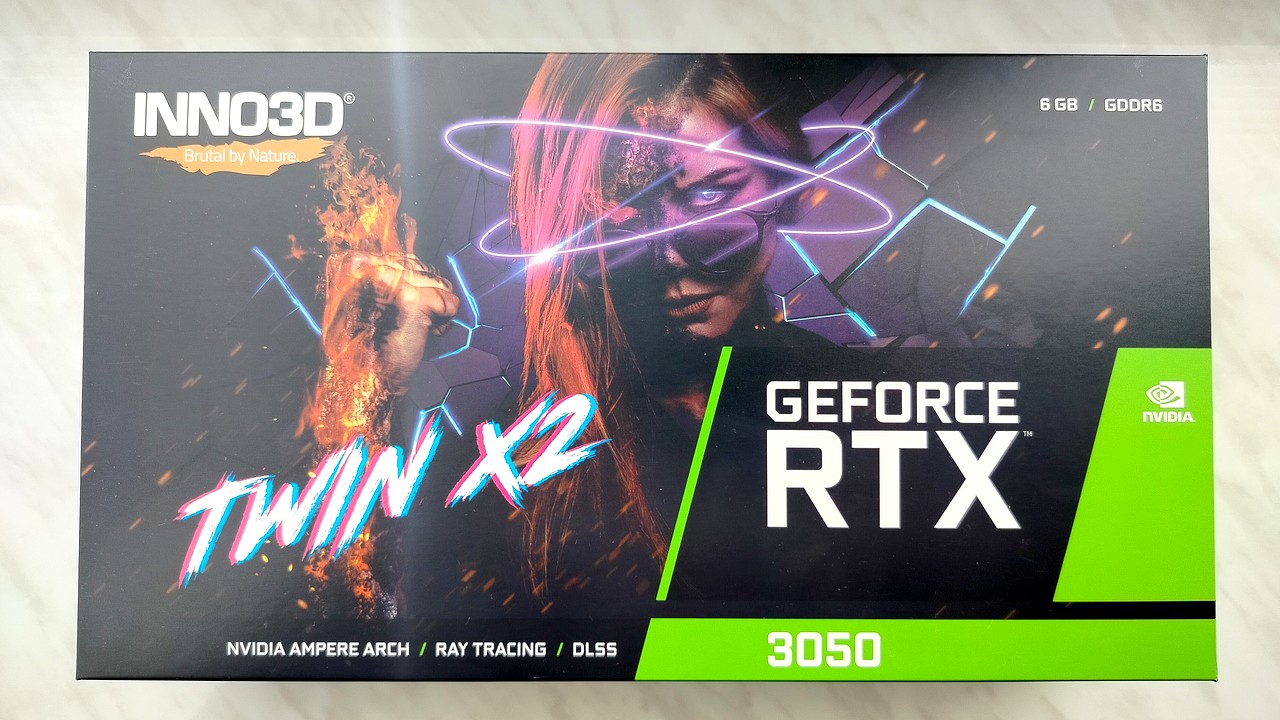
But the number of unified CUDA graphics microkernels remained unchanged at 2,304. Thanks to Mesh Shaders technology, each physical core is divided into two virtual threads, a la Hyper-Threading in the CPU. Previous GTX16/RTX20 Turing architecture video cards also had asynchronous shaders. But the GTX10 did not have Pascal, which is why they turned into a pumpkin with the release of games on DirectX 12 and Vulkan. The RTX 3050 also has ray tracing cores, but developers increasingly prefer Nanite software lighting built into the Unreal Engine.
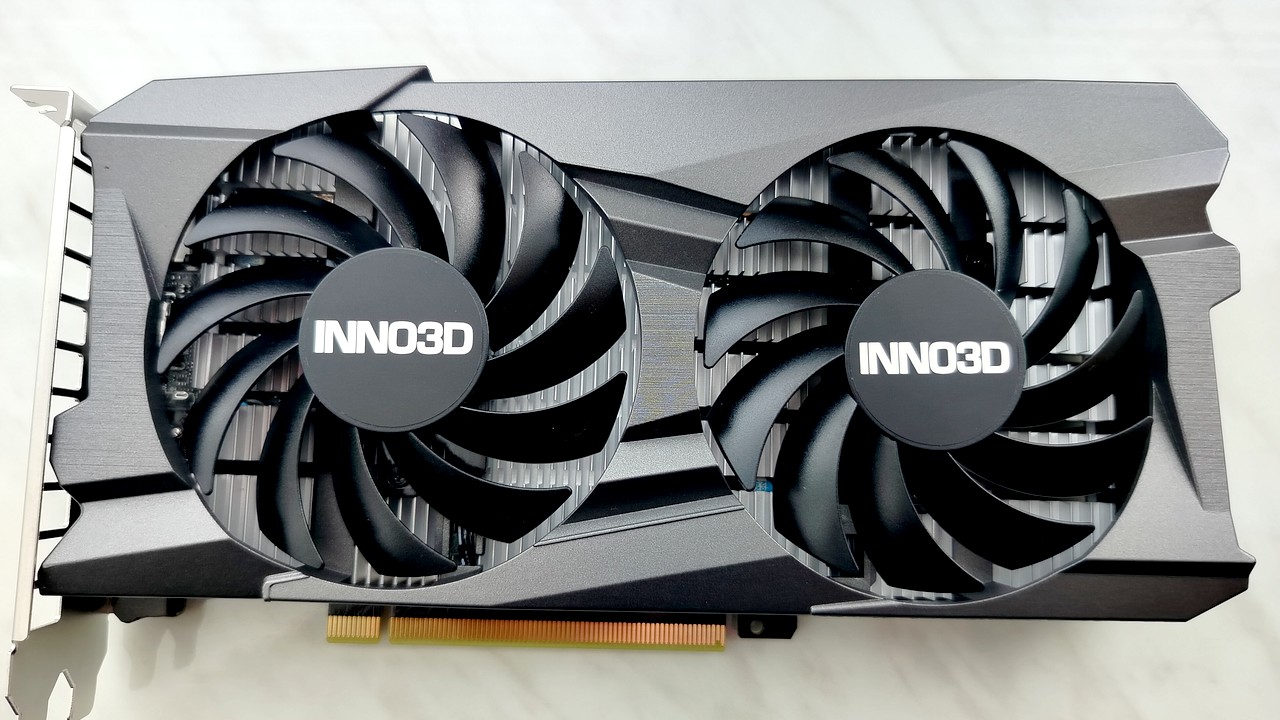
But what, on the contrary, is being used more and more actively are tensor cores, which are already in the third generation of the RTX 3050 (Volta - Turing - Ampere). According to the original idea, they were used to upscale texture resolution in DLSS games. But thanks to the ability to very quickly multiply matrices, they began to be readily used for deep learning of neural networks or, more commonly expressed, artificial intelligence. More and more applications, both from NVIDIA itself and from third-party developers, are receiving AI support.

Areas of application of AI
RTX Video Super Resolution, similar to DLSS gaming upscaling, enhances the clarity of videos using AI, whether they are offline in the cross-platform player VLC or online in the Chrome and Firefox web browsers. Tensor Cores are also used in the NVIDIA Broadcast application for game streamers and those who frequently make work video calls. For a microphone, it effectively filters out extraneous noise, even a neighbor’s electric drill, and for a webcam, it blurs or replaces the background.
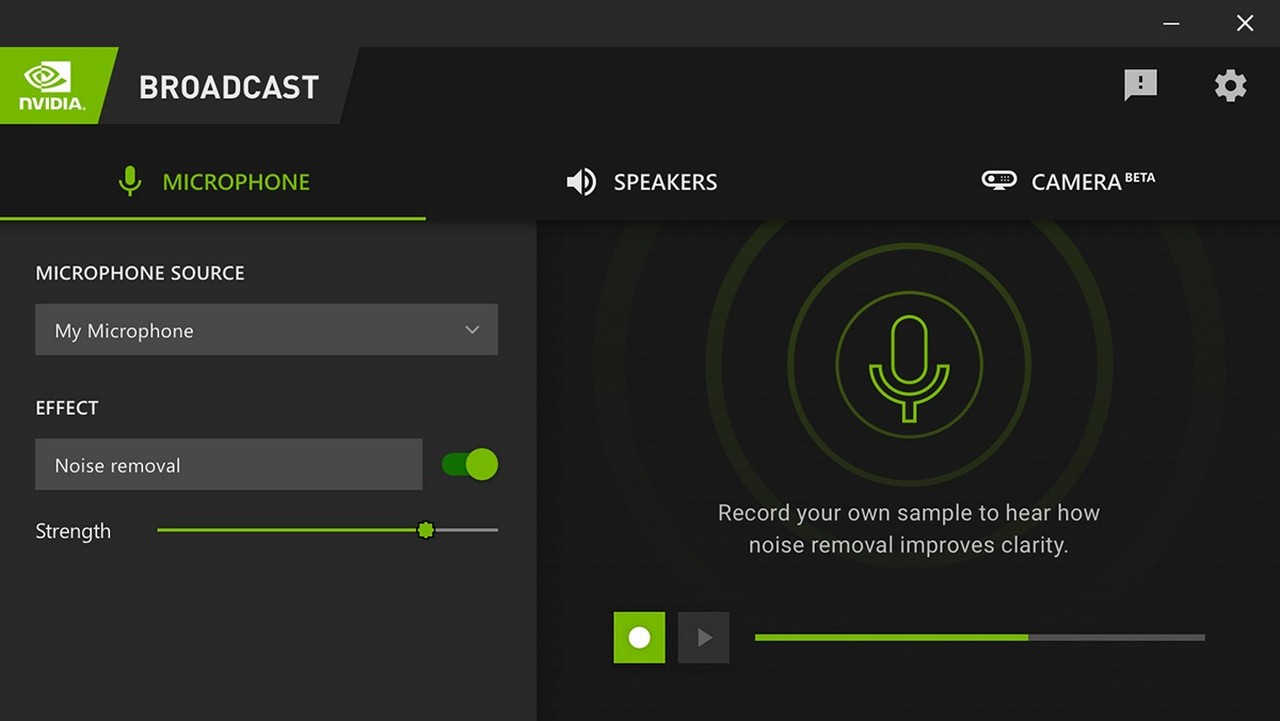
NVIDIA's newest AI creation is Chat with RTX, which allows you to run large language models Llama, Mistral and others locally on your computer. This speeds up the processing of requests compared to online chat running on a remote server, and also improves privacy. In addition, the local AI can be fed your archive of documents or notes, which it will take into account when generating responses. Or provide a link to a long video on YouTube, where the AI will precisely find the information you need.
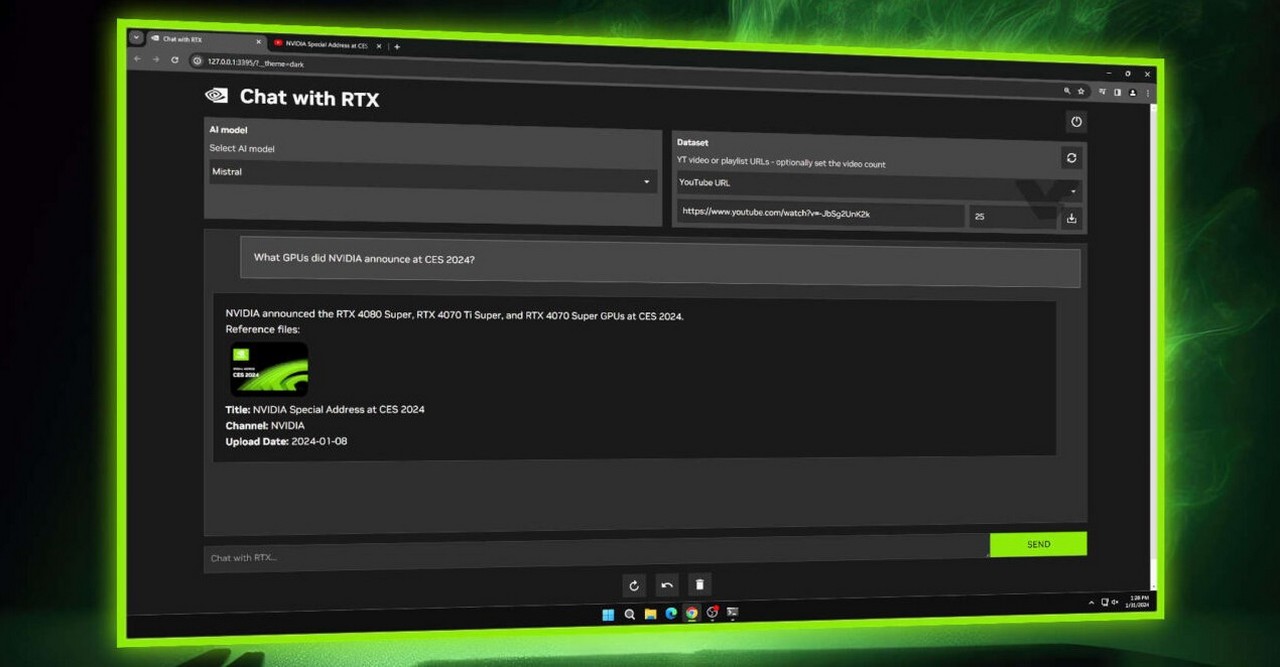
All applications from the Adobe Creative Cloud package support acceleration by tensor cores: Photoshop, Lightroom, Premiere, After Effects, Audition and others. And in DaVinci Resolve, the AI Magic Mask function has been added to remove any object from the video (person, object, background). In turn, Topaz Gigapixel helps increase the resolution of a photo to at least 100 megapixels. Finally, the free and open source Fooocus application, powered by the Stable Diffusion neural network, generates images based on text descriptions.

| Denika.ua | 10 686 ₴ | To Store |
| Foco.com.ua | 9 830 ₴ | To Store |
| Timesport.com.ua | 9 787 ₴ | To Store |
Inno3D RTX 3050 Twin X2 6GB is perhaps the most successful modification of the RTX 3050 among all six-gigabyte models. Most competitors are either low-profile, single-fan, or have two fans but a small radiator. Whereas the Inno3D has a radiator of almost the entire length of 22 cm. There are no copper tubes, but such a cold video card does not require them.
Video outputs are represented by a trinity of digital ones: HDMI, Display Port and DVI. Moreover, this is DVI-D without the ability to output an analog VGA video signal; now it is supported only by iGPUs. There is no power connector, there is enough power from the PCI-Express 4.0 x8 slot, which sets the RTX 3050 apart from the Radeon RX 6500 XT and Intel Arc A380, both of which require a 6-pin.
Twin X2 fans stop completely at low loads, reducing noise and wear to zero. Using the Inno3D TuneIT application, you can manually adjust the speed and frequency. But there is no particular point in overclocking due to the strict power limit of 70 W. Therefore, there is not a single OC modification of the RTX 3050-6GB on sale, only with reference frequencies.
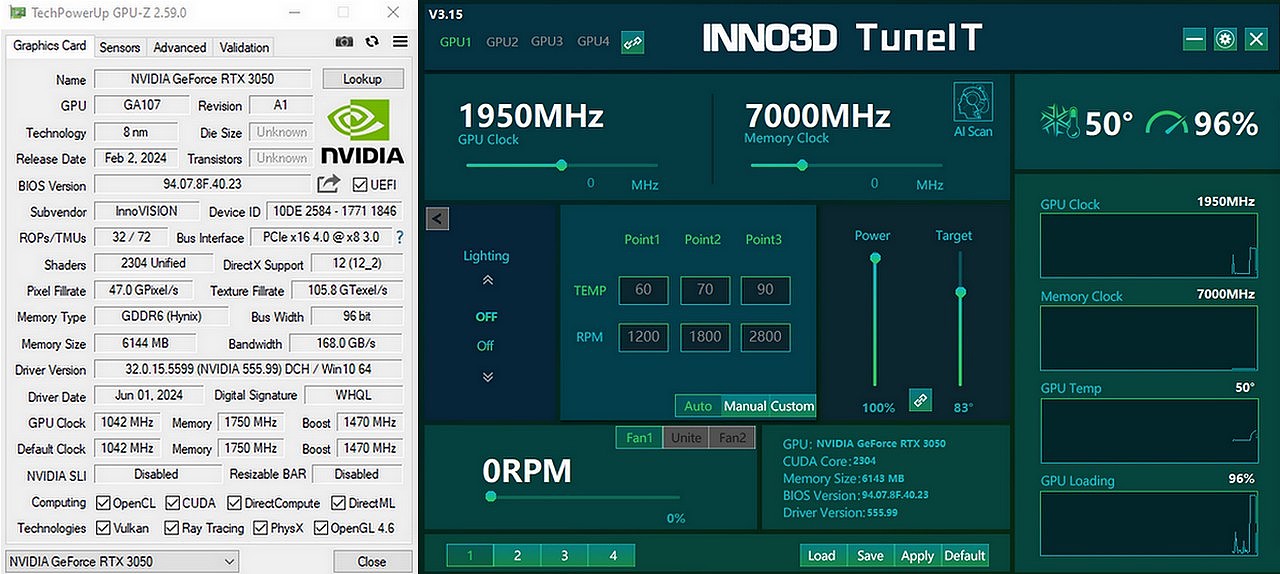
Comparison with competitors
The GeForce GTX 1650 is the desktop predecessor of the RTX 3050, as the RTX 2050 is only used in laptops. Initially, it also did not require additional power, but with the transition to a stripped-down chip from the RTX 2060, it was still forced to acquire it. It has asynchronous shaders, but lacks tensor and ray tracing cores, and does not support the AV1 codec. It is found with two types of memory: the new GDDR6 and the old GDDR5, the second is 20% slower.
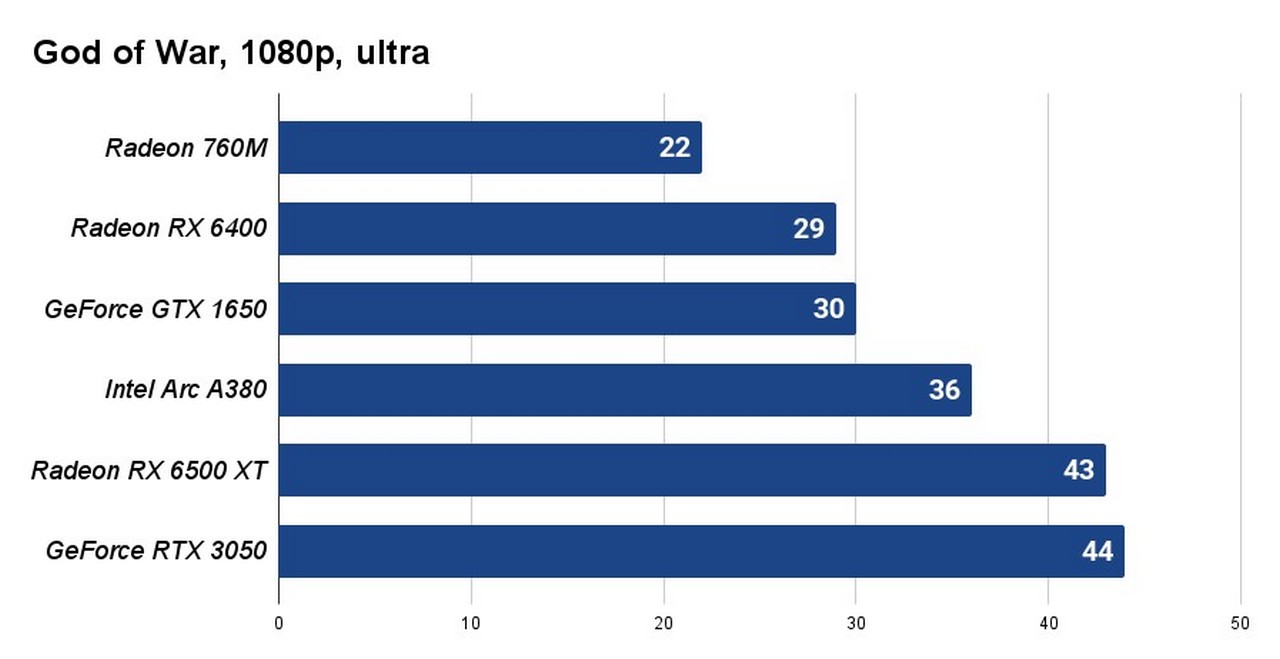
Radeon RX 6400 - on paper, it consumes only 50 W of power, but AMD cleverly specifies the TDP of the graphics chip only, excluding memory. Add another 20 W for GDDR6 and we get a figure comparable to the RTX 3050. The memory bus is narrow 64 bits, and the connection interface consists of only four PCIe lanes. Available in both low-profile and full-size card formats, but fan speed control is locked.
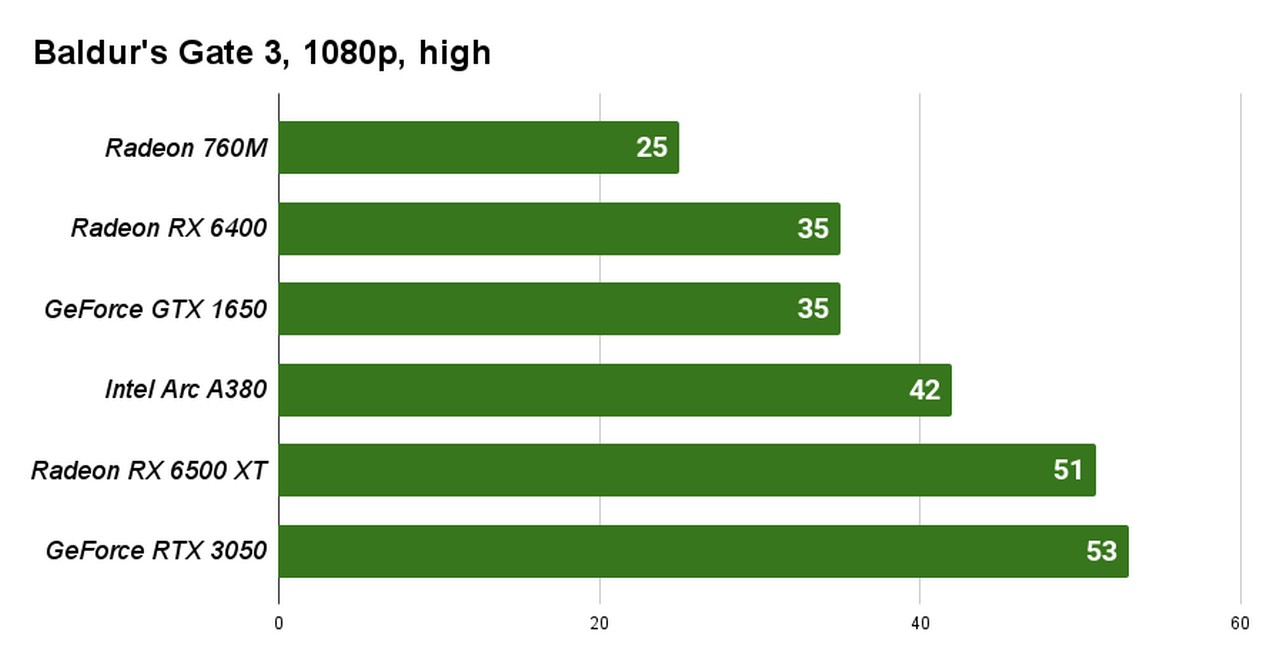
Radeon RX 6500 XT is the closest pursuer to the RTX 3050 in terms of raw teraflops performance. But given the small amount of memory 4 GB, games will often reload textures, which promises FPS drops of up to 20%, especially on processors and motherboards with PCIe 3.0 instead of 4.0. The situation is slightly smoothed out by native support for FSR 3 frame generation. It has no coprocessors for either artificial intelligence or video editing.

Intel Arc A380 - comparable to the RTX 3050 in terms of memory size and bus, the same 6 GB and 96 bits. But in terms of gaming performance it is still closer to the GTX 1650. At release there were buggy drivers, but a year later the situation has improved, especially in video editing. The Intel Quick Sync media encoder performs well even on an iGPU. True, artifacts still appear in new games on DIrectX 12, and some old ones on DX9 may not launch at all.
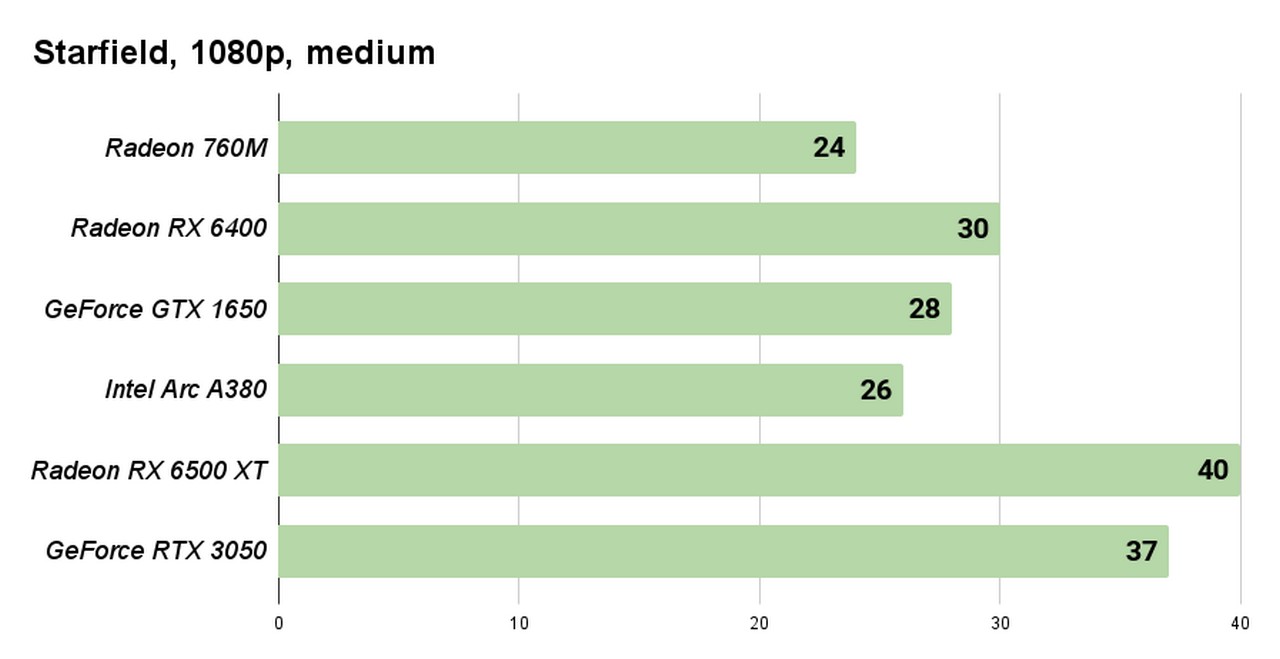
Radeon 760M - speaking of budget discrete video cards, one cannot fail to mention the latest integrated ones. The Ryzen 5 8600G with Radeon 760M costs about the same as the RTX 3050. If you shell out for high-frequency DDR5 RAM, you can roughly reach the level of the GTX 1650 and RX 6400. In addition, in addition to the iGPU, the Ryzen 8600G has a neural module for AI acceleration , as a response to the RTX 3050 Tensor Cores.
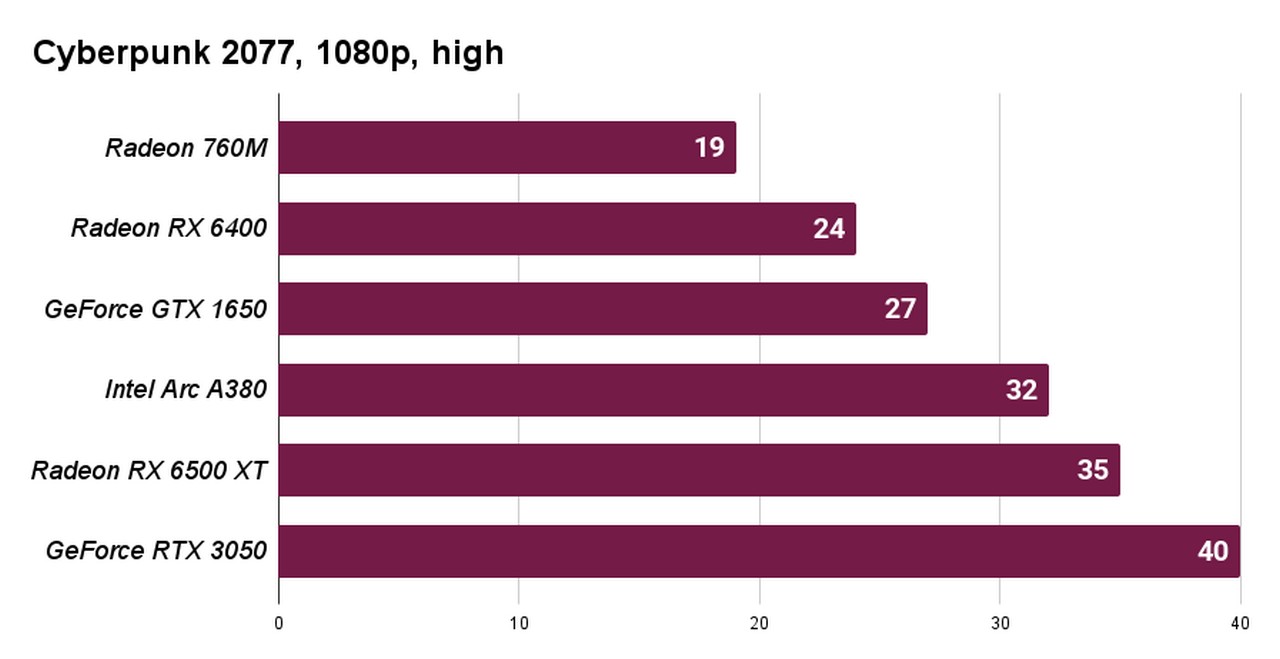
conclusions
As a result, the GeForce RTX 3050 6 GB is a worthy replacement for the GTX 1650, which not only adds gaming performance while maintaining the same power consumption, but also introduces many new features. Gamers will appreciate the crisp upscaling of DLSS, albeit the older version without frame generation, and the reduced input lag of Reflex (compatible monitor required). Movie fans will benefit from the updated NVENC media encoder with the AV1 codec (playback only), and streamers will benefit from the Broadcast application. Finally, tensor cores speed up many artificial intelligence programs. The optimal partner for the RTX 3050-6GB will be an inexpensive processor with a PCIe 4.0 bus: Core i3-12100F, i5-11400F or Ryzen 5 3600/5600.
Articles, reviews, useful tips
All materials

















